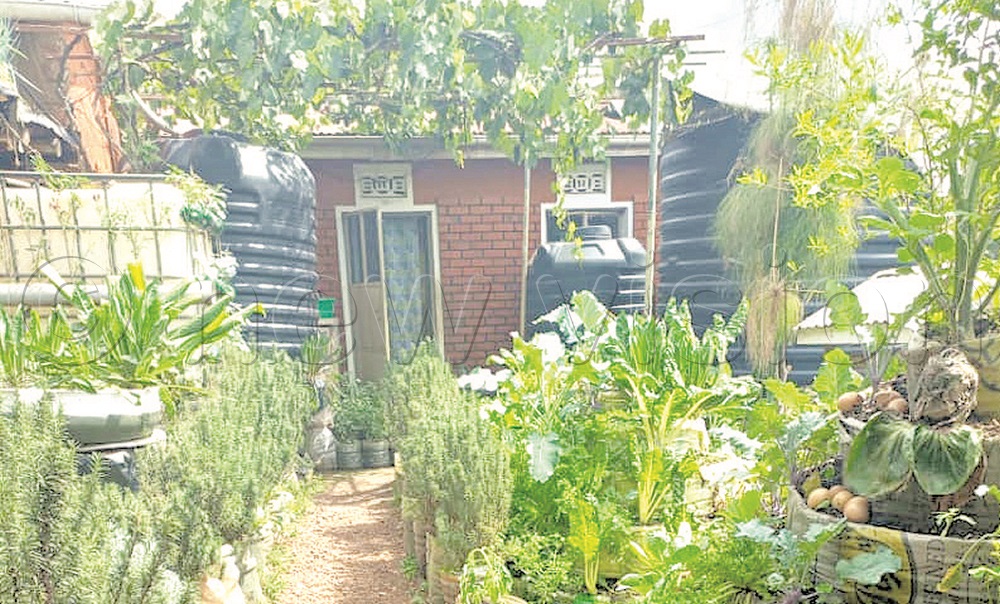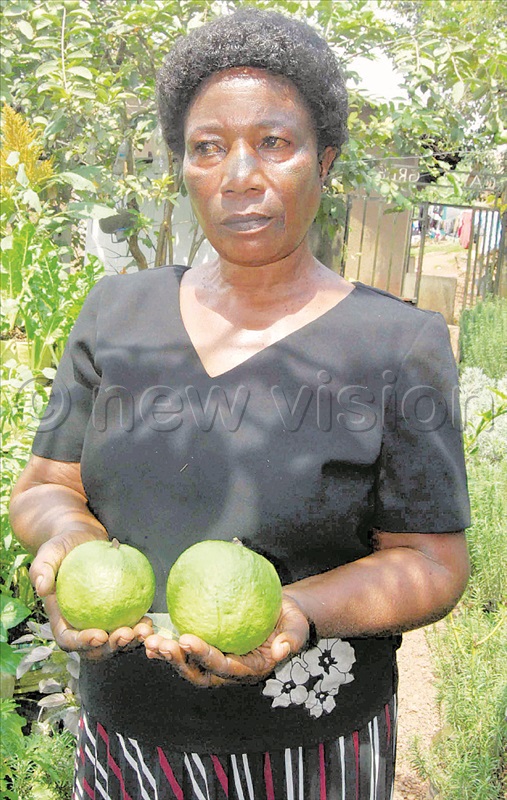Welcome to Camp Green. These are the words inscribed on Harriet Nakabaale’s gate at her Camp Green farm, also her home.
Green vegetables, fruits, poultry houses and fish tanks surround the property.
The farmhouse sits on a 50x30ft plot of land at Kawaala in Rubaga municipality, Kampala district.
Nakabaale is a testimony that one’s resolve, willingness and determination to solve a problem are strong pillars of success. S
he is an active urban farmer whose plot accommodates her residential house, several vegetable, spice, and fruit gardens, as well as chickens.
After acquiring this plot over 20 years ago, she transformed her compound with several containers; from old car tyres to flower vases, sacks, buckets, basins and boots.
These containers serve as the garden where she cultivates vegetables, herbs and fruits.

“I grew up knowing that every woman must have a garden. It only takes the passion and willingness for one to live their dreams,” the urban farmer says.
Starting her farm
Nakabaale had worked as a school secretary, a job from which she saved money and bought a plot.
“This plot is tiny to many, but when I bought it, I felt like I owned the whole universe because it was big enough for me to do whatever I dreamt of,” she says.
Nakabaale started planting vegetables, onions and tomatoes in polythene bags, sacks, old tyres and jerrycans.
“I do not remember how much my initial capital was because I did everything myself. This area is rocky, so I had to improve the soil. I went to the rubbish pits, got soil and removed the plastic from it. Then, I carried it home to make gardens using the containers, also collected from waste,” she says.
Whenever Nakabaale went to the market to buy groceries, she picked seed material from carrots, tomatoes and mangoes that vendors threw away after they were considered rotten.
To turn her backyard garden into a legitimate business,
Nakabaale registered it as Camp Green. Her “rubbish” has been transformed into a flourishing garden and farm, it has become a tourist attraction, a business and a study centre.
In it, she grows pomegranates and strawberries, eggplants and cauliflowers, dodo, carrots, tomatoes, spring onions, different varieties of peppers and groundnuts, among others.
There are the herbs — rosemary, lavender, thyme, mint and lemon balm. Leafy greens mix with root vegetables. Nakabaale has mastered the art of making her seed for vegetables.
She says the first tomato harvested will give the best seed with the same capacity as the mother plant.
“I use egg shells and old egg trays for my nursery beds. This helps me get the best seedlings free from diseases and contamination,” she says.

Nakabaale uses the same soil, which must be fertilised before being reused. She makes organic fertiliser from water hyacinth.
She squeezes chlorophyll out of the plant and then they spray it on the plants to get NPK [nitrogen, phosphorus and potassium] — which is better than some of the industry-manufactured fertilisers.
Water, irrigation
“At the beginning of the year, I sold rosemary seedlings worth sh2m and bought a 10,000ltrs tank to add to the ones I already had. These give me enough water to irrigate my crops during the dry seasons,” she says.
Poultry and markets
Harriet Nakabaale’s poultry house has broilers, ducks, guinea fowl and geese.
“I have 100 broilers, although their house can take 300 birds. I feed them well to ensure that by one month I can sell them off and stock others,” she explains.
The market has never been Nakabaale’s challenge because buyers come directly to her home.
She maintains four-step gardens, in addition to cultivating other crops on the ground and vertical gardens.
She earns about sh3.5m monthly from her compound.





